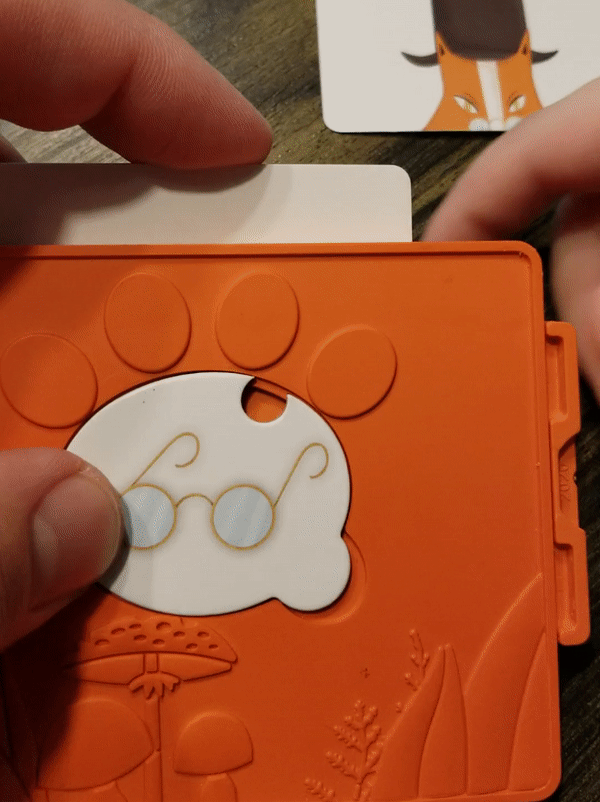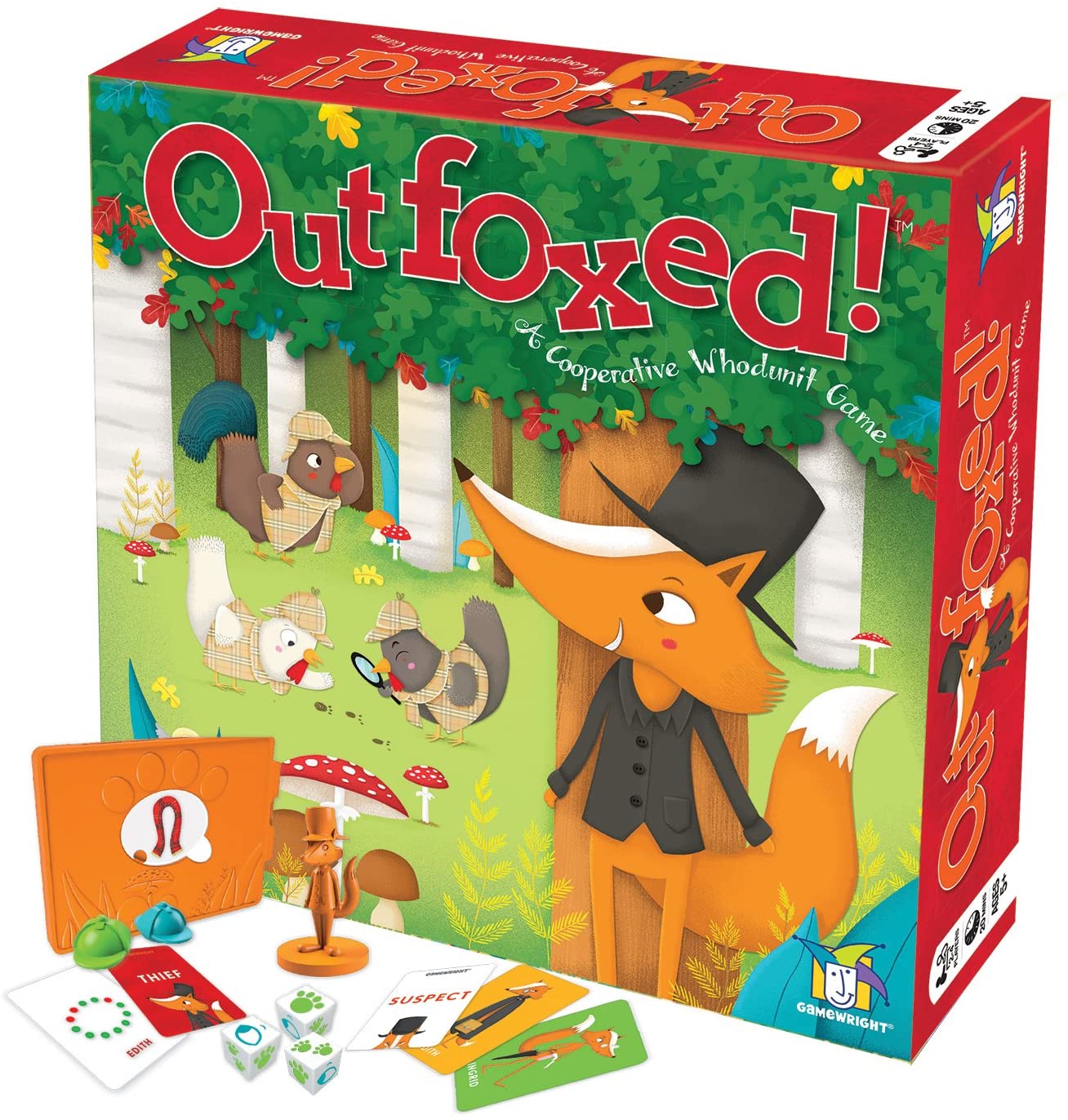I wasn’t planning on making my foray into games for younger children a monthly column but here we are. Going to the game store with my four year-old son has been an interesting exercise; while staying socially distant there’s plenty of boxes and interesting visuals for him to pick up on, and while he happily chose Dragon’s Breath and Rhino Hero Super Battle himself off the shelves, recent trips have been more of a tug-of-war while I convince him that we should buy a different game from the one he chose. This is in part because he hasn’t yet learned to read, and so any game requiring reading isn’t going to work for us. At least, not for another year or two. The good news is that Outfoxed! is great for teaching him deductive reasoning skills without requiring he be able to read.

One of our readers recommended Outfoxed! after my last review and after reading the description I was keen to give it a shot. Outfoxed! is a cooperative mystery game that combines Clue with Guess Who?. A wily fox has stolen Mrs. Plumpert’s prized pot pie and it’s up to you and up to three other detective chickens to figure out whodunnit. Each game starts with players revealing two out of their 16 suspects – each suspect has three items to identify them by, such as hats, scarves, gloves, and glasses. Players then take turns moving around a board and taking either one of two actions: Revealing suspects or searching for clues. Once you’ve chosen your action, you roll the game’s three dice and you have three chances, keeping successes, to roll three of the result you need (eyes for reveal suspects, paws for search for clues). Fail to score three matching results and you’ll move the thief piece three spaces forward – and three steps closer to escaping with the pie.
Score a “reveal suspects” result and you can turn over two suspect cards of your choosing, which you can then eliminate if your clues have already given you cause to do so. You’ll need to do this several times during the course of a game so you can widen your search and subsequently narrow it back down again until you have your fox. Choose to search for clues and you can move a number of spaces equal to the number of paw prints rolled – between 3 and 6 spaces. End your move on one of the clue icons (the spaces marked with paws on the board) and you can grab a clue from the pile and test it using the game’s suspect slider, a plastic decoder that you place a single random Thief card into before the game begins. These cards are marked with the name of the culprit and three green dots. When your clue matches one of the items worn by the thief, you’ll see a green dot. If they don’t, you’ll get a white dot.

As the game progresses, you’ll be able to quickly narrow down the suspects as you remove anyone wearing a piece of clothing marked white or lacking an item marked green. The game ends when either the thief escapes, or you make a guess as to who the culprit is. Guess correctly and you all win. Guess incorrectly and you all lose. In most games you’ll have no trouble winnowing down your options to a single suspect however, and so the accusation will be trivial.
This provides a wonderful opportunity to teach some deductive reasoning: As we reveal new suspects, we have our son identify the three items they’re wearing and ask him if that suspect can be the thief (though, it should be noted, he still refers to necklaces as “netflix”). Then we ask him why or why not, prompting him to tell us that the suspect is missing/has a specific item of clothing we’d already checked. Sometimes he’ll need reminding, but it’s a great exercise for getting him to think about the clues and remember what’s been revealed. Also note that while your experience may vary, the excitement of revealing new clues was very real for our son and as such he has only chosen to reveal suspects once in all of our games – so as you play, plan on doing the bulk of suspect reveal work. The open board has also given us a way to help him understand movement by squares – he’s been able to pick up how moving his hat piece works over the last few games, and now can make his own decisions about where to move. While Bryce can’t yet read, we do have him work a bit on his spelling as we play – when we have our final suspect, we have him match the letters on the suspect to the letters on the revealed thief card, to determine for us if they’re a match and we’ve guessed correctly.
The game’s cooperative nature is also a great asset; because we win or lose as a team, there’s no chance for us to “take a win away” from our son – we get to all celebrate our success and commiserate our failures together, which is important in these early games because there’s no way for him to honestly compete when it comes to playing most games. There will be plenty of time for him to learn about losing later on, when I finally introduce him to Warhammer proper. The big upside here is that we can play Outfoxed with him honestly – we don’t have to sandbag to make it an experience that works for him, which is a welcome bonus.
Final Verdict:
We’ve played around two dozen games of Outfoxed! now and the game still holds a fair amount of charm. My son still enjoys it tremendously, though for us it has become easy to predict the culprit well in advance, given the right clues. That’s not a dealbreaker, but it does mean the game isn’t nearly as entertaining for adults several games in as something like Rhino Hero, where regardless of how many games you play it’s still very easy to tip over a house of cards, especially one built by a four year-old who just wants to watch the world burn. Seeing my son pick up on deductive reasoning has been great, and he’s slowly gotten better at figuring out how to remove suspects from the pool as we reveal new clues. I’d highly recommend Outfoxed – it’s a clever, fun game that can be played very easily in about 30 minutes and makes for a more cerebral experience than something like Rhino Hero or the traditional HABA fare, while working very well for children under the age of 5.


